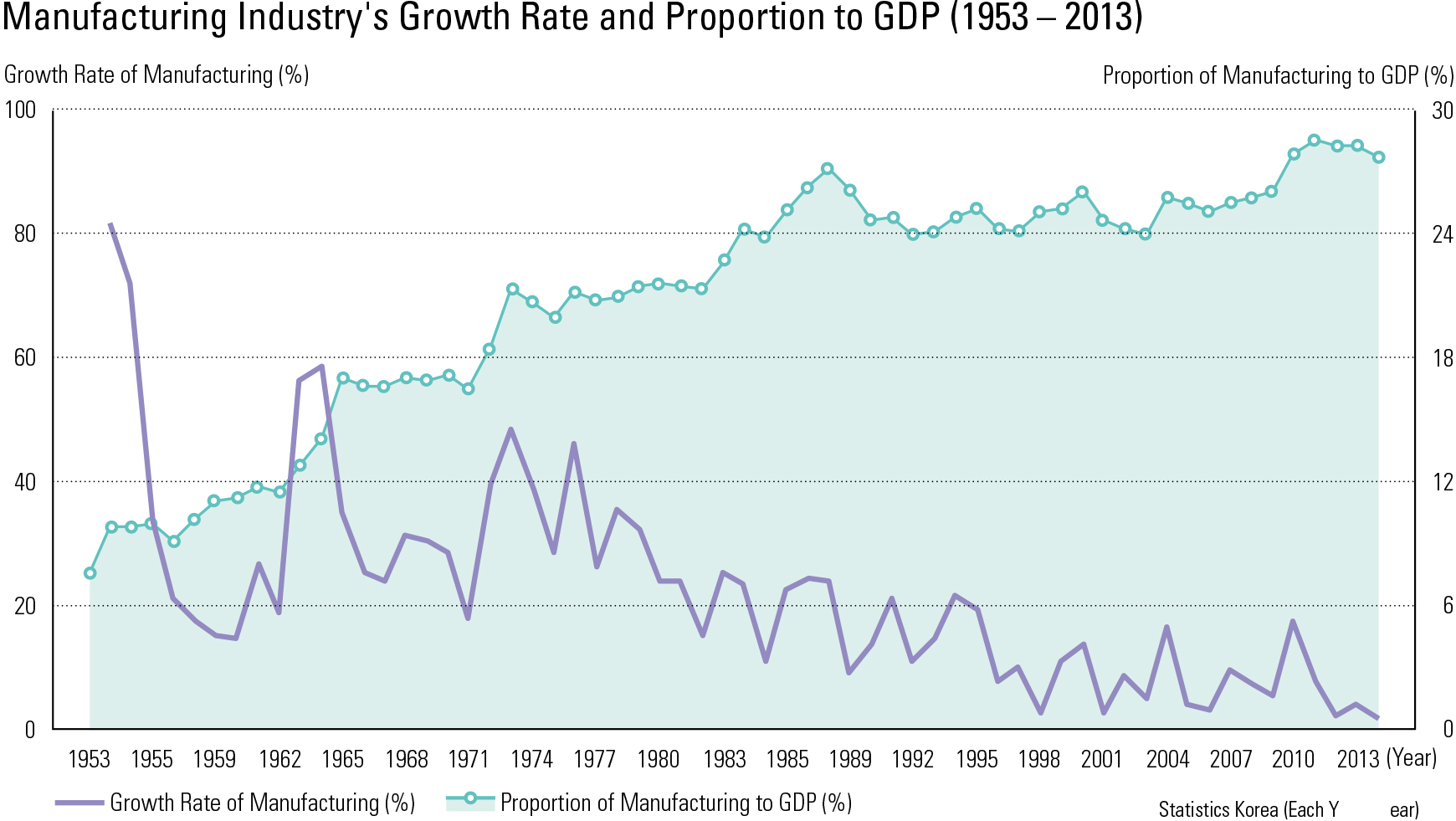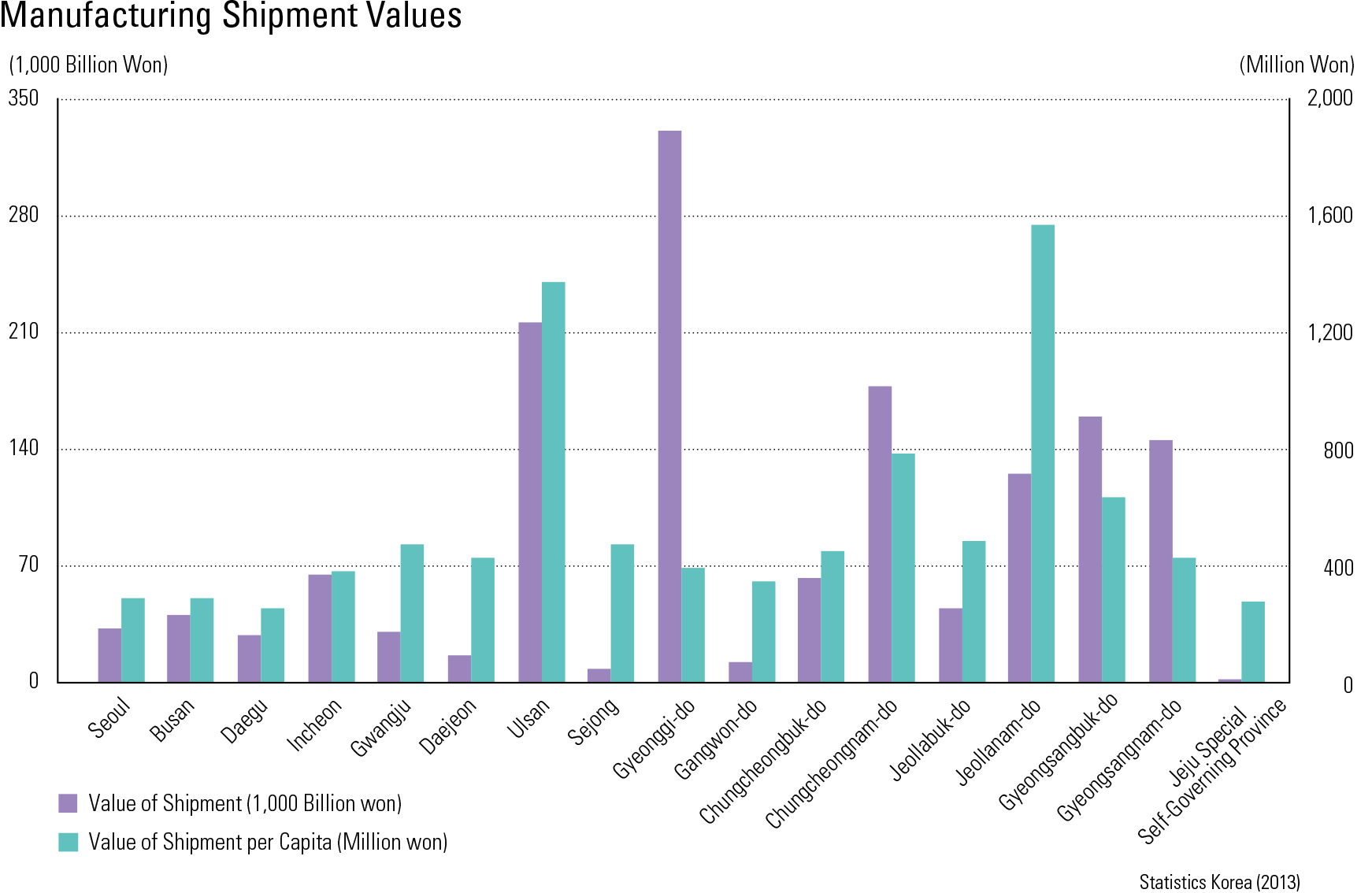English III
Korea’s manufacturing industry has gone through tremendous continuous growth during the last fifty years, playing a pivotal role in the nation’s economic development and contributing to the upgrade of the overall industrial foundation. Growth was particularly vigorous during Presi- dent Park Chung-Hee’s administration beginning in 1962, when the government adopted economic growth as a major national policy and promoted a series of ve-year economic development plans as the central task of a government-led industrial development policy. The policy pursued a strategy of exporting products from light industries such as textiles, wigs, and shoes. Since the mid-1970s, government industry promotion has shifted to the heavy chemical industry. In the 1990s, there was a shift in investment emphasis to high-tech indus- tries. Significant high-tech growth, including the development of semiconductors, computers, and information and communication technology, was accompanied by advanced technology training. Since the mid-2000s, stagnated growth in the man- ufacturing sector has brought a need for a different development strategy. This chapter will discuss the history of the last 40 years of the Korean manufac- turing industry and its transformation since its early stages. Speci cally, this chapter will introduce the current Korean major industries that have served as the foundation of national economic growth for years, the “Ppuri industry” (also known as the foundry industry) that supports the current Korean major industries, and the high value-added indus- tries and new growth engine industries that will become future cornerstones of Korea’s economy. Analyzing Korea’s manufacturing growth trend by comparing its proportion to its GDP reveals that manufacturing accounted for only 10% of the GDP before 1960. During the decade from 1961 to 1970, manufacturing grew from 11.8% to 17.2%, and manufacturing became an important component of the Korean economy. In the 1970s, manufactur- ing accounted for over 20% of the total GDP. In the 1980s, the growth rate for the decade was 24.3% and manufacturing became the major driving force of Korea's economic growth. Between the late 1980s and early 1990s, the manufacturing share of the GDP declined slightly from 27.2% (1988) to 23.9% (1992), after which it gradually rose again, remain- ing at around 27-28% into the 2010s. Although the real growth rate of the manufacturing industry was kept at a steadily high level (16.8% in the 1960s, 15.8% in the 1970s, and 12.2% in the 1980s), it de- clined to 6.5% in the 1990s and to 4% in the 2000s. In particular, with the 1997 nancial crisis resulting from internal and external factors and the global nancial crisis of 2008, manufacturing fell signi - cantly, recording a negative rate of growth. During the early industrialization stage in the 1960s, Seoul was the most important manufactur- ing center in the country. Since the 1980s, how- ever, manufacturing has become suburbanized and decentralized outside of the Greater Seoul Metropolitan area. At the same time, foreign direct investments in China and Southeast Asia have accelerated as the wage increases have surpassed productivities and weakened cost-competitive- ness. On the other hand, producer services such as design and advertising and the software industry have become more concentrated in Seoul. As a result, in 2013, Gyeonggi-do was responsible for 22.3% of all metropolitan and provincial manu- facturing shipments, followed by Ulsan (14.5%), Chungcheongnam-do (11.8%), Gyeongsangbuk-do (10.7%), and Gyeongsangnam-do (9.7%), while Seoul’s share was only 2.2% (11th in the nation).
page_2 |


